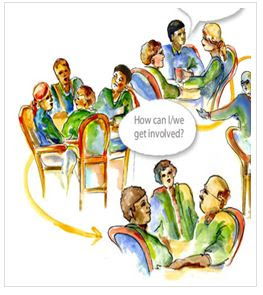
By now I have facilitated more than 100 sessions on development of Business strategy and I see some common occurings / patterns in most of the sessions. The observations and experiences are given below.......
- The development of suitable / appropriate strategic options often require novel perspective. Catching the novel perspective sometimes is the most difficult and time consuming part in strategy devlopment
- Many in the organisation view strategy and execution are two different and sometimes even go to the extent that they cannot co-exist.
- Real strategy making requires inputs and contributions from various members of the team. But the top management has the tendency to act as an apex body and take a stand point 'do as I/we say ". This disconnects many employees from the business.
- Strategic information is often forgotten amidst new information pertaining to daily operations. This makes people to be fire fighting than doing the important.
- Many times it requires the key people to make difficult decisions, which they postpone thinking better decision can come as time passes by.
- Many important key points need to be taken into account from the business perspective. But many key people think only in specific functions such as finance, production, accounts, sales , HR etc. They think of doing the job well and not winning the business.
- There is gross disagreement exists among key players on basic assumptions regarding the future of their business.
- The strategy need to be communicated to the employees convincingly, but little time and effort is spent on making the strategy simple to communicate.
- Difference of opinion among the key players regarding the strategy escalates into personal conflicts at a later stage.
- The key players fail to help the employees feel that strategy is something worthwhile to pursue, to identify and to feel proud of.

